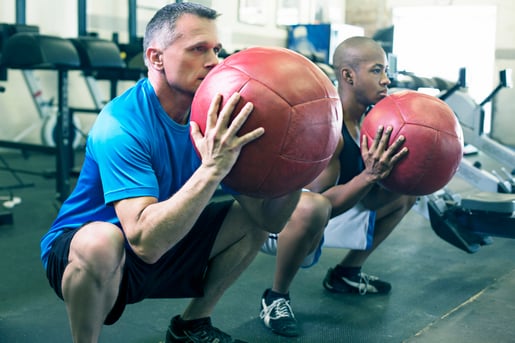 Improving your running time and efficiency can seem overwhelming. Whether you are a beginner or well-seasoned runner there is always room for performance improvement.
Improving your running time and efficiency can seem overwhelming. Whether you are a beginner or well-seasoned runner there is always room for performance improvement.
Understanding and building an anaerobic base is vital, let’s learn more! It’s important to understand anaerobic training and how it can benefit you. Anaerobic training is exercise that occurs in the absence of oxygen and is usually seen in short high intensity bursts of exercise. Things like heavy weight training, running, or cycling sprints are all considered anaerobic forms of exercise. This seems counterintuitive to train as you are running long distances, however, sprints can assist in building your cardiovascular endurance. This form of training can increase lactate threshold, allowing runners to run faster and longer while improve running efficiency. Utilizing hill sprints, high intensity intervals, or tempo runs will get you where you desire to be!
Different then anaerobic, the primary source that drives our energy systems during aerobic exercise is oxygen. Exercises like walking, running, hiking, and swimming are usually done at a lower intensity but for a greater distance overall. Developing your aerobic capacity will allow you to utilize oxygen more efficiently which will allow you to run at a faster pace while keeping the perceived intensity low. Setting up your aerobic training will be based on what goal you set. If your goal is to run a mile as fast as you can, running 1.5 – 2.5 miles will be enough to give you a satisfactory result. But if you signed up for your local 5k, then those number will increase up to 4, 5, or even close to a 10k. This might seem counterintuitive as you are running further than is required, but further distances will pay dividends when it is time to race.
Now that we have our running training program set that’s all we should need right? Not quite, another critical ingredient is strength training. Implementing a strength training routine to your program can elevate your training and allow you to reach your goals. Utilizing strength training can increase the amount of muscular strength and core balance needed to run faster and longer. From a muscular perspective, keeping the muscles in tip top shape will allow you to run more often and will prevent injuries. Strength training can assist in mobility and allow the joints to go through their full range of motion. Supplement your running program by adding strength training at a minimum of once a week, ideally 2 – 3 times a week.
This year don’t allow yourself to achieve the same mile times. Achieve more this year by following these simple tips. Now get on the road and let’s start earning some mileage!


 Cross training in exercise can make you a stronger athlete and help you achieve your fitness goals faster and more efficiently. Consider cross training in the workplace, and how learning or developing new skills can help to improve business, experiences, and job satisfaction – this isn’t much different in the realm of fitness! Simply put, cross training consists of adopting an exercise regimen which consists of a variety of modalities. To get started, consider your fitness goals, and the type of exercise that compliments them. Take running for example, instead of hitting the treadmill or pavement daily, try adding in Yoga or Pilates a few times a week for to help improve your flexibility and balance, or a strength training routine which targets the muscles you rely on to carry you across the finish line.
Cross training in exercise can make you a stronger athlete and help you achieve your fitness goals faster and more efficiently. Consider cross training in the workplace, and how learning or developing new skills can help to improve business, experiences, and job satisfaction – this isn’t much different in the realm of fitness! Simply put, cross training consists of adopting an exercise regimen which consists of a variety of modalities. To get started, consider your fitness goals, and the type of exercise that compliments them. Take running for example, instead of hitting the treadmill or pavement daily, try adding in Yoga or Pilates a few times a week for to help improve your flexibility and balance, or a strength training routine which targets the muscles you rely on to carry you across the finish line.
.jpg?width=477&name=Today's%20preparation%20tomorrows%20success%20sticky%20GettyImages-664811616%20(1).jpg)
